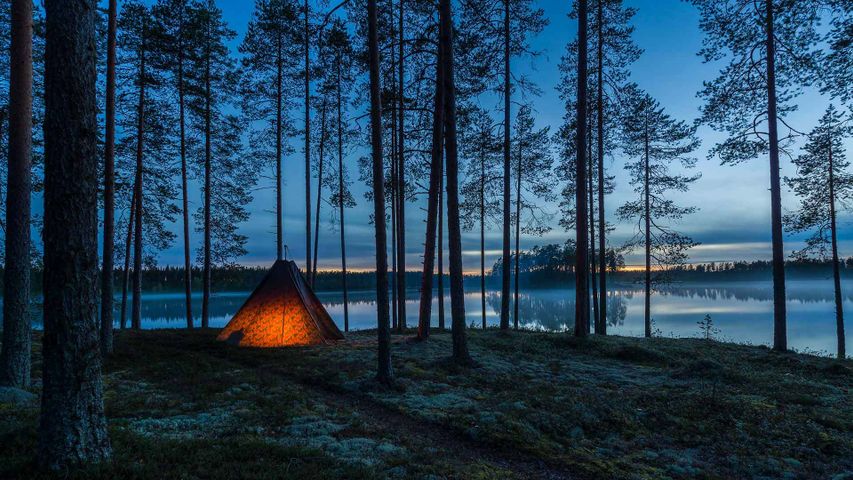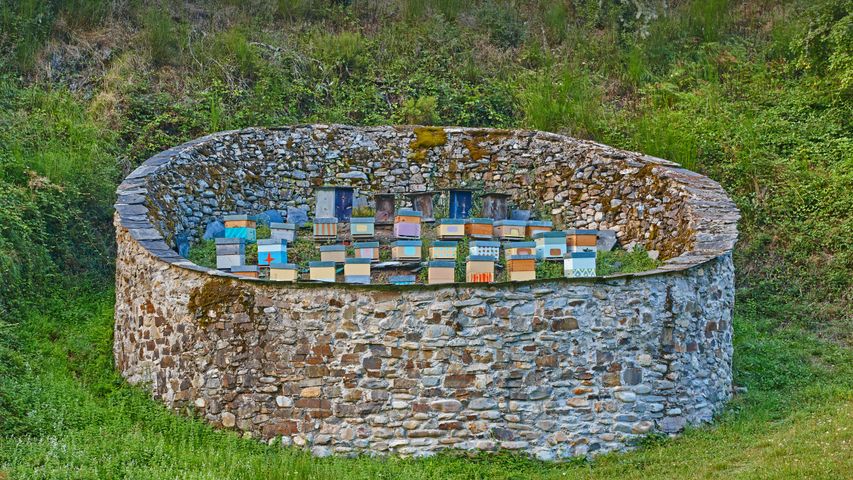Beehives in the Muniellos Nature Reserve in the province of Asturias, Spain
© ABB Photo/Shutterstoc
Saving and celebrating honey bees. World Honey Bee Day
Today we’re celebrating World Honey Bee Day, honouring the humble bee’s role in pollinating our crops and sharing honey goodness with us. It’s remarkable to consider that there are 20,000 different species of bees around the world, but just eight species of honey bee. And it’s sobering to realise how fragile their existence is. Billions of honey bees have disappeared over the last 15 years in what’s known as colony collapse disorder. There’s no definitive explanation for the die-off, though scientists believe pesticides, loss of habitat, climate change, mite infestation, and disease are contributing factors. Now we need to reintroduce bees and other pollinators to safeguard our food system.
Of course, besides pollinating plants, bees produce honey to feed their hive community over the winter. And since honey bees produce double or triple the amount of honey they need, there’s plenty for us to enjoy, too. Unfortunately for busy beekeepers here in the northwest province of Asturias, Spain, local endangered brown bears are also partial to snacking on honey. Hence the traditional stone wall is protecting the hives from sticky-pawed thieves.
While the bear has always had pride of place in Spanish culture – it's the symbol of Madrid, for example – bears’ reputation for plundering honey hives and sometimes even killing livestock makes them unpopular with beekeepers and farmers. The brown bears of Spain were once aggressively hunted, and the bear population fell to dangerously low levels by the 1970s. Conservationists worked to gain legal protection for the bears, and now there’s a delicate balance between bears and bees in Asturias. Ecotourism here in the Muniellos Nature Reserve helps beekeepers and farmers sustain their businesses, with carefully organised tours allowing visitors to observe the bears from a distance while spending money on local honey. Sweet.
Related Images
Bing Today Images





 Vila Franca Islet, São Miguel Island, Azores, Portugal
Vila Franca Islet, São Miguel Island, Azores, Portugal
 Mona Vale Rockpool, Sydney, Australia
Mona Vale Rockpool, Sydney, Australia
 Tea garden at Yangjiatang Village, Songyang County, China
Tea garden at Yangjiatang Village, Songyang County, China
 Aerial view of Khao Sok National Park, Surat Thani, Thailand
Aerial view of Khao Sok National Park, Surat Thani, Thailand
 Great Blue Hole, Belize
Great Blue Hole, Belize
 Dam, lake and mountains in Kerala
Dam, lake and mountains in Kerala
 Peggy's Cove Lighthouse, Nova Scotia, Canada
Peggy's Cove Lighthouse, Nova Scotia, Canada
 Fujian Tulou complex of historical and cultural heritage buildings in Fujian province, China
Fujian Tulou complex of historical and cultural heritage buildings in Fujian province, China
